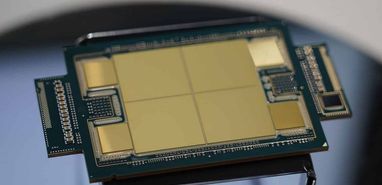
Intel has teased its plans to introduce dedicated cache tiles in its CPUs, a move reminiscent of AMD’s successful 3D V-Cache technology. However, unlike AMD’s desktop-oriented approach, Intel’s upcoming implementation is focused on workstation and server markets, leaving desktop gamers waiting for their turn.
Intel’s Strategy: A Different Path from AMD’s “X3D”
AMD has gained significant traction with its X3D processors, which leverage 3D V-Cache to boost performance in gaming and productivity tasks. The Ryzen 7 9800X3D, the latest in this lineup, has seen impressive demand, even selling out at major retailers. By incorporating additional cache layers, AMD has managed to deliver exceptional performance improvements, particularly for high-end gaming.
Despite AMD’s success, Intel is not rushing to introduce a similar feature for desktop CPUs. According to Florian Maislinger, Intel’s Tech Communications Manager, the company believes that AMD’s X3D processors cater to a relatively niche market—primarily gamers. Maislinger noted that while the technology brings significant benefits, it also involves compromises, making it less appealing for broader use cases.
Intel’s plan for dedicated cache tiles targets servers and workstations rather than the desktop market. Maislinger confirmed that the first CPUs featuring this new cache design would arrive next year, but they won’t be aimed at desktop users. Instead, these processors will cater to the enterprise segment, where demand for enhanced cache performance is more prominent.
Dedicated Cache Tiles: Intel’s Approach
Intel’s upcoming cache tiles are likely to feature in Clearwater Forest SKUs, although this has not been officially confirmed. Previous releases, such as Emerald Rapids and Granite Rapids, demonstrated Intel’s ability to enhance cache capacity significantly, setting the stage for future improvements. However, there is no clear indication that mainstream desktop CPUs will benefit from these advancements anytime soon.
While AMD’s desktop lineup has seen substantial upgrades through 3D V-Cache, Intel has remained focused on optimizing cache performance for its enterprise products. Pat Gelsinger, Intel’s CEO, has previously hinted at innovations involving stacked cache for future CPUs. However, it seems desktop users will need to wait longer for these enhancements to become available in consumer-grade processors.
The Current Market Landscape
Intel’s decision not to prioritize desktop cache enhancements may reflect a strategic focus on high-margin enterprise markets. Meanwhile, AMD continues to capitalize on its Ryzen X3D lineup, which has filled a significant performance gap in gaming and productivity workloads. The competition between the two tech giants underscores differing philosophies: while AMD aims to dominate the gaming segment, Intel targets workstation and server applications.
As Intel prepares to unveil its Core Ultra 200 CPUs, the battle for market share is set to intensify. The introduction of dedicated cache tiles could provide Intel with a competitive edge in the enterprise space, even as AMD continues to capture the attention of gamers and content creators.
What Lies Ahead?
While the inclusion of cache tiles in Intel’s workstation and server CPUs is an exciting development, desktop users will have to remain patient. The implementation of stacked cache technology in mainstream CPUs could take several more generations to materialize. Until then, AMD’s X3D processors will likely remain the go-to choice for gamers seeking cutting-edge performance.








By Andrej Kovacevic
Updated on 9th March 2025